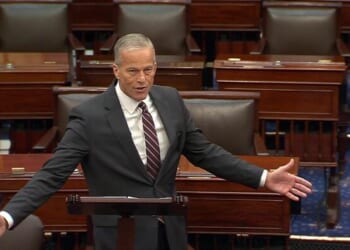It refuses to end. Synoding, that is. That clever term is George Weigel’s and captures the whimsical inanity of the Bergoglian invention of synodality. In a recent essay of Mr. Weigel’s in that estimable journal First Things, he was rather irenic about the past aims of synodality. To me, he was straining a bit too far for my theological tastes. But bending over backward seems to have become a signature métier for Mr. Weigel. But a man of his intellectual stature should know that the problem with bending over backward is that you soon find yourself unable to stand straight again.
O yes, synoding. Restrain your laughter (or fear) as I present an enticing morsel from the official Pathways for the Implementation of the Present Phase of the Synod 2025-2028:
We recall that the purpose of the Synod is not to produce documents, but to plant dreams, draw forth prophecies and visions, allow hope to flourish, inspire trust, bind up wounds, weave together relationships, awaken a dawn of hope, learn from one another and create a bright resourcefulness that will enlighten minds, warm hearts, give strength to our hands.
This bears as much resemblance to Catholicism as a seven-year-old’s birthday party. More woefully, it has as much to do with religion as astrology has to do with astronomy.
But synodality is the most recent in a long line of embarrassing experiments of the past half century. It seems as though the Church’s leaders have one rule: if an experiment has failed because of its absurdity, the next one must be made more absurd.
An older generation of Catholics can bear this out. They must admit an embarrassing familiarity with such lovelies as: Call to Action, Nuns on the Bus, The Archdiocese of Los Angeles Religious Education Congress (still enduring with all the risibility of an octogenarian wheelchair race), Confessional Rooms, Lenten Rice Bowls, The St. Louis Jesuits, Liberation Theology, Seamless Garment and multi-colored clerical shirts. But that is only a sampling. Others have mercifully been forgotten or should be.
The net effect of these experiments is empty pews, shuttered churches, desolate seminaries, and the almost entire collapse of religious orders. A more dramatic case in point is the decades-old détente the European bishops conducted with Islam. It has resulted in wrenching violence, the burning of churches, and the near disappearance of any Catholic presence.
Only yesterday the once papabile Cardinal Parolin warned Catholics to not tip over into intolerance due to the murder of Charlie Kirk. Imagine him preaching that about blacks garroted by the Ku Klux Klan, or homosexuals thrown from the tops of buildings by Muslim jihadists. In reality’s piercing light, the benighted cardinal’s words are shown for the oratorical litter they are.
To this failed cardinal we have the words of venerable Fulton Sheen:
America, it is said, is suffering from intolerance—it is not. It is suffering from tolerance. Tolerance of right and wrong, truth and error, virtue and evil, Christ and chaos. Our country is not nearly so overrun with the bigoted as it is overrun with the broad minded.
Imagine, most Catholic priests spoke with that kind of crystalline Catholic logic 70 years ago. Now they babble in the accommodating Parolin patois.
All this endless assembly line of synodal novelties betrays nothing less than a tiring of God. He is a consuming fire, and this crowd has turned Him into an afterglow of fading embers. The Church’s mission is entirely supernatural, and the language of the supernatural is uttered with the crackling tongues of fire given to her at Pentecost. She also wields the supernatural tools in her sacred traditions as she has for millennia. These tried-and-true weapons have been successful in bringing the liberating Gospel of Our Lord to every continent.
Now, she trades that divine proclamation for the junk language of synodality.
The synodalist eschews those weapons given to us by a triumphant conquering Christ, in exchange for the shiny new baubles of the zeitgeist.
The cringeworthy march of synodality epitomizes a parlous weariness with God. The incongruities could not be more conspicuous.
How does “planting dreams” accord with, “But God forbid that I should glory save in the Cross of Our Lord Jesus Christ; by whom the world is crucified to me, and I to the world” (Galatians 6:14). Or can anyone explain how “planting dreams, and drawing forth prophecies and visions” is consonant with, “And I, if I be lifted up from the earth, will draw all men to myself” (John 12:32).
How will the hyper-psychologized purring of “inspire trust, bind up wounds, weave together relationships, awaken a dawn of hope” possibly accord with the summoning words of Christ: “All power is given me unto heaven and on earth. Go ye therefore and teach all nations…. Teaching them to observe all things whatsoever I have commanded you” (Matthew 28:18-20). How does the synodolist reconcile himself to Christ’s jolting words, “Think not that I am come to bring peace on earth; I came not to send peace, but a sword” (Matthew 10:34).












